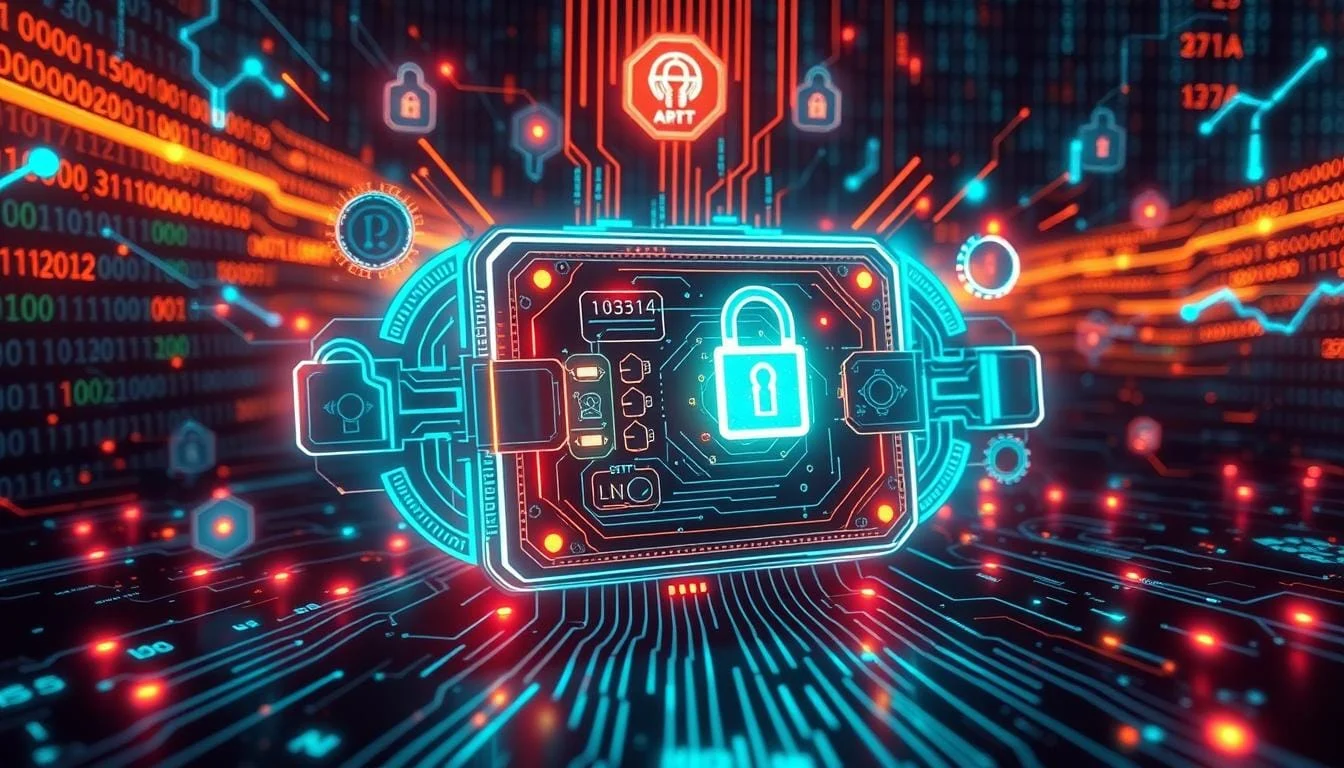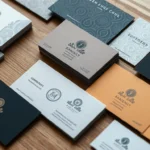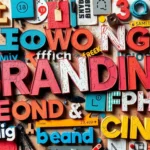Digital artists are turning pixels into profit through NFT art. This new frontier allows creators to showcase and sell their work. Let’s explore how to create an NFT and join this digital revolution.
NFTs are unique digital assets stored on the blockchain. They represent ownership of digital creations like artwork or virtual real estate. For artists, NFTs provide a way to authenticate and sell digital work.

Creating NFT art is more than making a digital image. It combines creativity with technology. You’ll need to understand cryptocurrencies and blockchain platforms to bring your digital asset to life.
This guide covers the essentials of NFT creation. We’ll explore the technology behind NFTs and how to market your digital masterpiece. Whether you’re an experienced artist or a curious beginner, you’ll find valuable information here.
Key Takeaways
- NFTs are unique digital assets stored on a blockchain
- Creating NFT art involves digital creation and blockchain technology
- Ethereum is the most popular blockchain for NFTs
- You’ll need a crypto wallet and to choose a blockchain platform
- NFT marketplaces like OpenSea allow you to mint and sell your creations
- Marketing and community building are crucial for NFT success
Need help with your NFT project? Hire a skilled digital artist on Fiverr to create stunning NFT artwork for your collection.
Understanding NFTs and Their Value in Digital Art
NFTs are transforming the digital artwork scene. These unique certificates use blockchain to verify ownership and prevent duplication. Artists can explore new income and exposure opportunities through NFTs in the digital art world.
What Makes NFTs Unique
NFTs stand out due to their one-of-a-kind nature. Each token represents a specific digital artwork, ensuring its uniqueness and scarcity. This allows artists to sell original digital creations, similar to traditional physical artworks.
The Role of Blockchain Technology
Blockchain technology is the foundation of NFTs. It provides a secure, transparent record of ownership and transactions. When an NFT is created, it’s minted on a blockchain, creating an unalterable record.
Benefits for Digital Artists
The NFT marketplace offers several advantages for digital artists:
- New revenue streams: The job outlook for artists is projected to grow by 6% from 2021 to 2031, with NFTs providing additional income opportunities.
- Royalties: Some NFT platforms offer 8-10% royalties on future sales, creating ongoing income.
- Direct engagement: Artists can connect with buyers through platforms like OpenSea, Rarible, and SuperRare.
- Proof of ownership: NFTs allow artists to easily prove the originality and ownership of their work.
The NFT market can be volatile, with recent statistics showing a 70% slump in prices. However, some NFT artworks can achieve immense value. Beeple’s “Everydays — The First 5000 Days” sold for $69.3 million.
To start your NFT journey, consider hiring a freelance digital artist. They can help bring your creative vision to life in the digital realm.
Essential Tools and Requirements for NFT Creation
Creating NFTs requires specific tools and platforms. Let’s look at what you need to bring your digital art to life in the blockchain world.
Digital Art Creation Software
You’ll need reliable digital art software to start making NFTs. Adobe Photoshop, Affinity Photo, and Krita are popular choices. These tools offer features to help you craft stunning digital masterpieces.

Cryptocurrency Wallet Setup
A crypto wallet is crucial for storing and trading your NFTs. MetaMask, Trust Wallet, and Coinbase Wallet are well-known options. These secure your digital assets and enable smooth transactions on blockchain platforms.
Blockchain Platform Selection
Picking the right blockchain platform is key for your NFT venture. Ethereum is popular, but Solana offers lower fees and faster transactions. Consider gas fees, transaction speed, and community support when choosing.
| Platform | Pros | Cons |
|---|---|---|
| Ethereum | Large community, widespread adoption | Higher gas fees |
| Solana | Lower fees, faster transactions | Smaller market share |
Mastering these tools and platforms will prepare you for NFT creation. The NFT space is evolving, offering great potential for growth in digital art.
Need help getting started? Hire an NFT expert to guide you through the process. They can help you succeed in the digital art marketplace.
Choose a Blockchain for Your NFT
Picking the right blockchain is key to your NFT project’s success. Each platform has unique features that can boost your chances. Let’s look at some popular options and their main traits.

Ethereum is a top pick for NFT makers. But it has high gas fees and slow speeds. Solana offers faster deals and lower costs, making it a good choice.
Flow is made just for NFTs. It’s easy to use and splits work well.
When picking a blockchain, think about these things:
- Gas fees and minting costs
- Transaction speed
- NFT marketplace compatibility
- Security measures
- Developer community support
Let’s compare some popular blockchain platforms for NFT creation:
| Blockchain | Minting Cost | Transaction Speed | Key Feature |
|---|---|---|---|
| Ethereum | High | Slow | Wide adoption |
| Solana | Very low | Very fast | Efficiency |
| Flow | Moderate | Fast | NFT-optimized |
| Polygon | Low | Fast | Cost-effective |
| Tezos | Low | Moderate | Sustainability |
Your choice depends on your specific needs and goals. Think about how it can grow and work with other chains. This will help your NFT project succeed in the long run.
Need help with blockchain and NFTs? Hire an expert to guide you. They can help you make smart choices for your NFT project.
How to Create NFT Art: From Concept to Digital Asset
NFT art creation combines creativity and technical skills. Artists bring their ideas to life in the digital world. This process transforms concepts into unique digital assets.
Planning Your NFT Artwork
Start by brainstorming unique ideas for your NFT art. Think about the story or emotion you want to convey. NFTs can be 2D, 3D, or pixel art.
Your concept should be distinctive in the NFT marketplace. Consider what makes your art special and appealing to collectors.
Digital Art Creation Process
Select the right software for your digital art. Adobe Photoshop or Krita work well for 2D art. 3D artists might prefer Maya or Blender.
Pixel art enthusiasts can use PixelArt or MagicaVoxel. Try different tools to find what fits your style best.

File Format Considerations
Pay attention to file formats when preparing your NFT art. Most NFT marketplaces support JPEG, PNG, GIF, and MP4. Choose a format that keeps your artwork’s quality while meeting platform requirements.
Creating NFT art is about making a unique digital asset. Take time to refine your concept and perfect your creation process. Your efforts will help your NFT art stand out in the marketplace.
Need help with your NFT vision? Hire a talented digital artist on Fiverr to create stunning NFT art for you.
Setting Up Your Crypto Wallet for NFT Trading
A crypto wallet is vital for storing and trading NFTs. NFTs are digital artworks, pictures, videos, or music. A secure wallet is crucial for these digital assets.
Let’s explore how to set up your wallet for NFT trading.
Popular Wallet Options
You have several choices for NFT crypto wallets. MetaMask and Trust Wallet are popular software wallets. These digital wallets make managing your NFTs easy.
| Wallet Type | Examples | Key Features |
|---|---|---|
| Hot Wallets (Online) | MetaMask, Trust Wallet, Coinbase Wallet | Easy access, user-friendly interface |
| Cold Wallets (Offline) | Ledger, Trezor | Enhanced security, offline storage |
Security Considerations
Wallet security is crucial when dealing with NFTs. Use two-factor authentication and store private keys offline. For extra safety, try a hardware wallet for long-term NFT storage.

Connecting to Marketplaces
NFT wallets should integrate with marketplaces. Check if your wallet works with popular platforms like OpenSea. Most wallets connect easily, letting you start trading fast.
Need help with your NFT wallet? Hire a freelancer to guide you. They’ll ensure your wallet is secure and ready for NFT trading.
Top NFT Marketplaces for Artists
NFT marketplaces have changed digital art. OpenSea, Rarible, and LooksRare are popular platforms for artists. Each offers unique features for different needs.

OpenSea is the biggest NFT marketplace. It’s user-friendly and supports various blockchains. In 2021, it had $12.5 billion in trading volume.
OpenSea takes 2.5% per transaction. It has a high user rating of 4.5/5. OpenSea captured 8% of the global NFT market.
Rarible is straightforward with great customer support. It also has a 2.5% fee but a lower 3.0/5 rating. LooksRare offers floor price tracking for individual traits.
Solana marketplaces like Solanart and Magic Eden are growing. They offer lower fees and faster transactions than Ethereum-based platforms.
| Marketplace | Founded | Est. Annual Revenue | Employees | Key Partnership |
|---|---|---|---|---|
| OpenSea | 2017 | $90-$95 million | 101-250 | Warner Music Group |
| Rarible | 2020 | $55-$90 million | 51-100 | Adobe |
| SuperRare | 2018 | $25-$50 million | 25-99 | Google, Gucci |
| Nifty Gateway | 2017 | $55-$90 million | 11-50 | Samsung |
The NFT art market may reach $80 billion by 2025. Artists have many chances to succeed in this digital world. Pick a platform that fits your goals and tech skills.
Need help making your NFT masterpiece? Hire a skilled digital artist on Fiverr to create your vision.
The NFT Minting Process Explained
NFT minting creates unique digital assets on the blockchain. It turns your artwork into a tradable token. Let’s explore how it works and what you should know.
What is Minting
Minting an NFT creates a smart contract on the blockchain. This contract holds info about your artwork and proves ownership.
The minting process records a blockchain transaction. It brings your digital creation to life as a unique token.

Gas Fees and Costs
Gas fees are costs for processing blockchain transactions. These fees vary based on network traffic, especially on Ethereum.
Here’s a breakdown of typical costs:
| Platform | Average Gas Fee | Minting Time |
|---|---|---|
| Ethereum | $20 – $100 | 10 min – 2 hours |
| Flow | $0.10 – $1 | 2 – 10 minutes |
| Solana | $0.01 – $0.05 | 1 – 5 minutes |
Minting Methods
You can mint your NFT in several ways. Traditional minting needs upfront gas fees. Lazy minting delays costs until the NFT sells.
Some popular minting options include:
- Single NFTs: Perfect for unique, one-of-a-kind pieces
- Collections: Ideal for series or themed artwork
- Generative art: Creates multiple variations from a base design
Start your NFT journey today! Hire a talented digital artist to bring your NFT vision to life!
Pricing and Selling Strategies for NFT Art
Setting the right price for your NFT art is crucial for success. Consider factors like reputation, artwork rarity, and market trends. Let’s explore effective pricing methods and selling tactics.

You have two main options for selling NFTs: fixed price or auction. Fixed price listings are straightforward. You set a specific amount and wait for a buyer.
Auctions can create excitement and potentially drive up the price. Choose between a traditional highest bidder format or a declining price model.
The declining price strategy starts high and gradually decreases. This can create urgency and encourage faster sales.
| Pricing Method | Pros | Cons |
|---|---|---|
| Fixed Price | Predictable income | May miss out on higher bids |
| Highest Bidder Auction | Potential for higher sales | Uncertain final price |
| Declining Price Auction | Creates urgency | Risk of selling too low |
Many NFT marketplaces allow you to set royalties for secondary sales. These typically range from 5% to 10%. You’ll earn a percentage every time your NFT is resold.
“NFTs offer artists unprecedented control over their work’s value and distribution. Embrace this opportunity to set fair prices and earn continuous royalties.”
Your pricing strategy can evolve over time. Start by researching similar artworks and getting community feedback. Adjust your prices as you gain experience and build your reputation.
Need help with your NFT pricing strategy? Hire an NFT expert on Fiverr to guide you through the process.
Marketing Your NFT Creation
NFT marketing is vital for success in digital art. The booming market offers huge potential for artists. Jack Dorsey’s first tweet sold for $2.9 million, while Beeple’s piece fetched $69 million.
Building Community Presence
Create a strong community around your NFT art. Discord servers help build anticipation and engage buyers. Join NFT groups and share your process.
This approach can lead to a loyal fan base. A dedicated following is crucial for long-term success in NFTs.
Social Media Promotion
Use Twitter and Instagram to showcase your NFT art. These visual platforms are ideal for promotion. Use relevant hashtags to reach more people.
Don’t overlook Reddit’s active NFT investor community. Regular posts about your work can attract collectors.
Networking with Collectors
Connect with NFT collectors through online events. OpenSea and Rarible offer great networking chances. Share behind-the-scenes content to build personal connections.
Some marketplaces offer up to 30% in after-sale royalties. This makes collector relationships valuable over time.
For expert help marketing your NFT, consider hiring a freelance digital artist on Fiverr. They can provide valuable insights to boost your efforts.
FAQ:
For the topic “Create NFT Art: A Step-by-Step Guide to Make Your Own NFT Token”
Q: What is a non-fungible token and how does it relate to digital artwork?
A: Non-fungible token, is a unique digital asset stored on a blockchain. In the context of digital artwork, an NFT represents ownership and authenticity of a specific piece of art. Unlike traditional art, NFTs allow artists to create and sell digital artwork with provable scarcity and ownership, opening up new possibilities for creators in the digital space.
Q: How do I create NFTs?
A: To create an NFT, follow these steps: 1) Choose a blockchain platform (e.g., Ethereum, Solana). 2) Set up a crypto wallet compatible with your chosen platform. 3) Create your digital artwork using software like Photoshop or Illustrator. 4) Select an NFT marketplace (e.g., OpenSea, Rarible). 5) Connect your wallet to the marketplace. 6) Upload your artwork and set metadata. 7) Mint your NFT by paying the required fee. 8) List your NFT for sale if desired.
Q: What’s the cost to create an NFT?
A: The cost to create an NFT varies depending on the blockchain and marketplace you choose. Minting fees, also known as “gas fees” on the Ethereum network, can range from a few dollars to hundreds of dollars, depending on network congestion. Some platforms offer “lazy minting,” where the NFT is only created when someone purchases it, reducing upfront costs. Additionally, there may be marketplace listing fees to consider when you want to sell your NFT.
Q: Can I create and sell NFT art for free?
A: While it’s possible to create NFT art for free using various digital tools, selling an NFT typically involves some costs. However, some platforms offer ways to minimize upfront expenses. For example, platforms like OpenSea and Rarible offer “lazy minting,” where the NFT is only created when someone purchases it, shifting the minting costs to the buyer. This allows creators to list their NFTs for sale without paying upfront fees, making it more accessible to enter the NFT market.
Q: How do I choose the right blockchain for my NFT?
A: When choosing a blockchain for your NFT, consider factors such as popularity, gas fees, and environmental impact. Ethereum is the most widely used blockchain for NFTs, offering a large market and strong community support. However, it has higher gas fees and energy consumption. Alternatives like Solana, Flow, or Tezos offer lower fees and better energy efficiency but may have smaller markets. Consider your target audience, budget, and environmental concerns when making your decision.
Q: What steps should I take to create successful NFT art?
A: To create successful NFT art: 1) Develop a unique style or concept. 2) Create high-quality, visually appealing artwork. 3) Build a strong online presence and engage with the NFT community. 4) Choose the right platform and blockchain for your target audience. 5) Price your NFTs strategically. 6) Provide value through utility or exclusive perks. 7) Collaborate with other artists or brands. 8) Market your NFTs effectively through social media and NFT-specific platforms. 9) Continuously learn and adapt to the evolving NFT landscape.
Q: How do you mint your NFT and list it for sale?
A: To mint your NFT and list it for sale: 1) Choose an NFT marketplace (e.g., OpenSea, Rarible). 2) Connect your crypto wallet to the platform. 3) Click “Create” or “Mint NFT” on the marketplace. 4) Upload your digital file and fill in metadata (title, description, properties). 5) Choose between single edition or multiple editions. 6) Set a price or auction type. 7) Pay the minting fee if required. 8) Confirm the transaction in your wallet. 9) Once minted, your NFT will be listed for sale on the marketplace.
Q: What are some popular NFT platforms for creating and selling NFT art?
A: Popular NFT platforms for creating and selling NFT art include: 1) OpenSea: The largest NFT marketplace, supporting various blockchains. 2) Rarible: A community-owned platform with a focus on artist empowerment. 3) Foundation: A curated platform for high-quality digital art. 4) SuperRare: A marketplace for single-edition digital artworks. 5) Nifty Gateway: Known for drops by celebrity artists and brands. 6) Mintable: Offers gasless minting options. 7) NBA Top Shot: Specializes in licensed sports collectibles. Each platform has its unique features and audience, so research to find the best fit for your NFT project.
Source Links
- How to Create an NFT
- NFTs for Beginners: How to Make Your Own NFT
- How to Create an NFT: The Complete Beginner’s Guide
- Create your NFT with confidence by following key steps to turn physical art into a digital masterpiece.
- NFT enthusiasts can create a unique digital asset that nft is sold on various platforms.
- Anyone can create an NFT, whether you’re a Solana NFT creator or vector art specialist.
- Learn how to create an eye-catching piece of nft art that stands out in the nft collection.
- Your goal is to create something memorable – list your nft art on a blockchain and join the digital art revolution.
- Discover how to make NFT art by understanding the nft creation process and create an account on reputable platforms.
- Creating your own nft art allows you to transform any digital creation into a potentially valuable asset.
- NFTs are stored securely on blockchain networks, giving nft owners proof of authenticity and ownership.
- Whether you’re a nft artist or just starting, you can make nft art that reflects your unique creative vision.
- Make an nft by converting any digital artwork into a blockchain-based asset. Your first nft can be created for free on various platforms.
- Want to create something unique? Follow the steps to create compelling generative art nfts that can generate significant nft sales.
- Process of creating involves turning digital art into an nft and placing the nft on a blockchain for authenticity and trading.
- NFT for free options exist on various platforms, allowing you to also create digital art easily.
- Looking to create nft art means you can transform any digital asset that can be turned into an nft.
- Purchase your nft on blockchain marketplaces to showcase your digital creation, keeping it as long as the market supports it.
- You can turn nft out of any digital content, keeping your nft as long as you want in the blockchain marketplace.
- 6 Tips to Promote Your NFT Art
- A Master Guide on How to create NFT Artwork Easily (2024)
Our Partners: CSKDesignCrafts.com – FitFusioHub.com – LifeCraftsCentre.com
This post contains affiliate links, which means I may earn a commission if you make a purchase through these links. There is no additional charge to you! Thank you for supporting my blog so I can continue creating free content each week!





